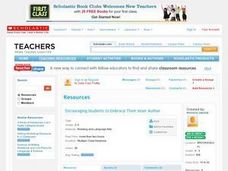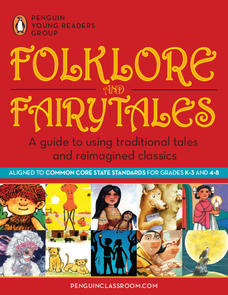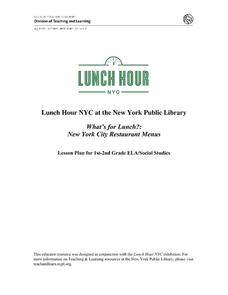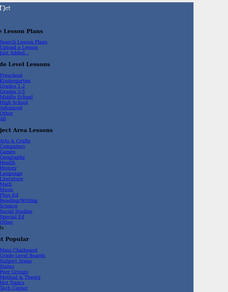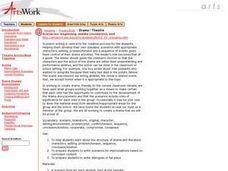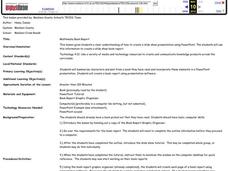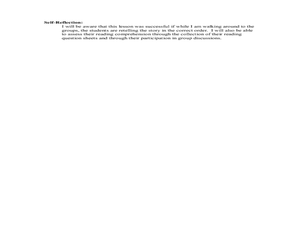Curated OER
Batter Up! Rediscover the Poem "Casey at the Bat"
The baseball themed poem, "Casey at the Bat" is a great summertime focus for reading and writing.
Curated OER
The Nature of the Antagonist
Pupils explain the differences between protagonists and antagonists and recognize the fundamental purpose of an antagonist or villain in storytelling. They also explain conflict as used in literature.
Curated OER
Conflict
Students outline the action in their narrative writing assignments by brainstorming about conflict. In this conflict analysis lesson, students define conflict and discuss the different types of conflict. Students brainstorm about a...
Curated OER
In the Pilot's Seat
Students examine a review of several of the new television series launching in the Fall 1999 season and interpret how a critic discusses the notion of 'repurposing' old shows. They work in small groups to create basic character sketches...
Curated OER
Great Expectations: Group Writing
Examine the differences between totalitarianism and democracy in this writing lesson. Using the same format and theme from Great Expectations, young writers work in pairs to compose their own short stories. They follow guidelines for the...
Carnegie Library
Creative Writing: Middle School Lesson Plan
Enhance a unit on historical fiction with an engaging writing lesson. Learners bring the Industrial Era to life as they compose their own historical fiction pieces based on primary source images of Pittsburgh steel workers.
Curated OER
Encouraging Students to Embrace Their Inner Author
Everyone is a writer! Youngsters compose an original piece of writing. In this writing lesson plan, they come up with their own idea for a piece of writing, revise it, and then publish it with illustrations. This lesson plan includes...
Curated OER
Analyzing Literary Devices
Eighth graders identify figurative language and poetry in this literary analysis lesson. Using Through the Looking Glass by Lewis Carroll and a YouTube video for "The Walrus and the Carpenter," young readers complete a literary device...
Penguin Books
Folklore and Fairytales: A Guide to Using Traditional Tales and Reimagined Classics
Every culture has its own stories to tell. An interesting educator's guide shares a large collection of fairytales and folktales, some from different cultures and some re-creations of classics. A summary and brief teaching ideas...
Curated OER
Create a Book with Student Treasures
You can't publish a story until after it has been revised and edited! Budding authors investigate the writing process while drafting an original story. They select a topic, complete a rough draft, edit it, revise it, and finally publish...
New York Public Library
What's for Lunch?: New York City Restaurant Menus
Do you remember the days when a cup of coffee cost five cents? At A.W. Dennett restaurant in 1894, you could buy a five-cent cup of coffee and as well as a five-cent slice of pie to accompany it. The menu from that year is a primary...
John F. Kennedy Center
Writing a Myth
Tap into the imaginative minds of young learners with a creative writing activity. After reading the myth Giants and Mosquitoes, this student guide supports young writers as they brainstorm and develop their very own creation myths....
Novelinks
Tuck Everlasting: Directed Reading Thinking Activity
Encourage close reading for young learners with a lesson based on Natalie Babbitt's Tuck Everlasting. The first part of the resource guides readers through a Directed Reading Thinking Activity (DRTA), prompting them to make...
Curated OER
Reading Response Journal Lit Logs
Here is a worksheet presenting many ways to create topics and start sentences. The writing prompts are best used for young writers who are creating reading response journals or literature logs. Sometimes, all a writer needs is a good...
Curated OER
Focus on Figurative Language
Using the poems "First Snow" by Ted Kooser and "Eating Alone" by Yi-Young Lee (or other suggested poems by Robert Frost or Sara Teasdale), middle schoolers search for examples of figurative language. Guide your learners by discussing...
Curated OER
Summarizing Key Information
Imagine the surprise when small groups present their Evidence Charts to the class and discover that each group has studied a different version of the Cinderella story. Irish, Ojibwa, Egyptian, Chinese, Korean, Persian, Mexican, and...
Curated OER
Scenarios: Beginning, Middle (incidents), End
Young scholars investigate writing scenarios that can be performed. They examine the parts and levels of scenarios that can actually be performed.
Curated OER
Telling a Story
Do your class members complain they don’t know what to write about? Give them disposable cameras and ask them to take pictures of 12 things that make them happy. After the pictures are developed, they are pasted on a poster board and...
Curated OER
Fairy Tales Retold
Students use writing processes effectively to adapt and retell stories. They reread a favorite fairy tale, then adapt and retell in a PowerPoint or other multimedia presentation. They present their rewritten and edited presentations to...
Curated OER
Multimedia Book Report
Learners take a book they've read previously and create a multimedia book report. They use the book report graphic organizer (attached) to plan their PowerPoint presentation. A thorough rubric is provided for you to ease grading. There's...
Brain Targeted Teaching
Tuck Everlasting Novel Study
The broad ideas included here provide clear ideas on how to use brain-targeted learning, what activities work best with Tuck Everlasting, how to apply the knowledge gained from their reading, and ideas for evaluation. Not teaching...
Curated OER
The Little Hungry Caterpillar
Students discuss "The Little Hungry Caterpillar." In this reading comprehension lesson plan, students make sock caterpillars used in retelling the story so as sequence the events accurately.
Curated OER
Open Your Eyes Wide-Shut
Students improve their language skills through 11 activities. In this language skills lesson, students listen to picture books, answer questions about elements of a story, enhance their vocabulary and grammar skills, use 5 W questions,...
Curated OER
Giving An Oral Book Report
Students study techniques used to give an oral book report. They read their book, plan their thoughts, and write their report. Students present their book report to the class.
Other popular searches
- Setting Plot Main Characters
- Plot, Characters and Setting
- Plot Characters and Setting
- Plot Setting Characters






